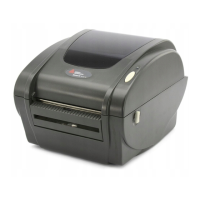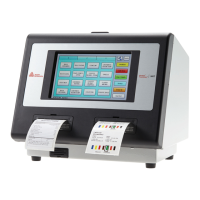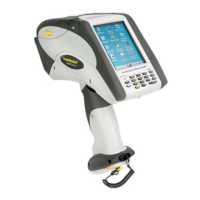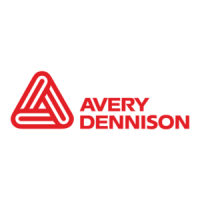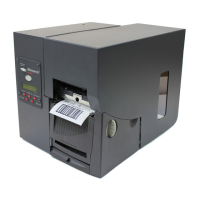What to do if Avery Dennison Printer is printing shadows or smears?
- RRyan MoodyAug 12, 2025
If your Avery Dennison Printer is printing shadows or smears, try these steps: Clean the printhead, change the supply, and check the ribbon.

What to do if Avery Dennison Printer is printing shadows or smears?
If your Avery Dennison Printer is printing shadows or smears, try these steps: Clean the printhead, change the supply, and check the ribbon.
What to do if Avery Dennison Printer shows error message during startup?
If you receive an error message during the startup of your Avery Dennison Printer, turn off the printer, wait fifteen seconds, and then turn it back on. If the error message reappears, call Technical Support.
What to do if Avery Dennison Printer prints blank labels or 750 series errors?
If your Avery Dennison Printer prints blank labels or shows 750 series errors, clean the supply sensors.
What to do if Avery Dennison Printer prints partially printed data?
If your Avery Dennison Printer is only printing data partially, try cleaning the printhead and sending a corrected format packet.
How to fix Avery Dennison Printer when downloading a script, the printer errors?
If your Avery Dennison Printer errors when downloading a script, check the available flash memory. Try formatting the flash memory or clearing the NVRAM.
What to do if Avery Dennison Printer does not feed?
If your Avery Dennison Printer does not feed, ensure that the wide/narrow knobs are set correctly.
What to do if after downloading a script, the script does not appear to be loaded on Avery Dennison Printer?
If, after downloading a script, the script does not appear to be loaded on your Avery Dennison Printer, try formatting the flash memory and then download the script again.
What to do if backing paper is wrapped around platen or peel roller of Avery Dennison Printer?
If the backing paper is wrapped around the platen or peel roller of your Avery Dennison Printer, carefully remove the backing paper. Make sure the backing paper tears at the saw-toothed tear edge when using backfeed and peel mode.
| Brand | Avery Dennison |
|---|---|
| Model | Monarch 9825 |
| Category | Printer |
| Language | English |
Identifies the intended reader of the Operator's Handbook.
Provides a summary of the manual's chapter contents and scope.
Instructions for safely unpacking and preparing the printer for shipment.
Information on obtaining additional technical documentation and resources.
Steps for connecting the power cable and establishing initial communication.
Procedures for connecting the printer to a host system via serial or parallel ports.
Overview of the printer's control panel, including lights, buttons, and display functions.
Instructions on how to select functions and navigate through the printer's menu system.
Guidance on how to exit menu options and save or discard changes.
Step-by-step guide for loading various types of label and tag supplies into the printer.
Specific instructions for loading labels when using the optional peel mode feature.
Instructions for using the optional tear bar for detaching labels.
Procedures for loading and using linerless label supplies.
Guide on adjusting the supply width knobs for optimal label tracking.
Detailed instructions for correctly installing a ribbon roll into the printer.
How to set the printer to recognize different types of supplies (aperture, black mark, etc.).
Instructions on configuring the printer to use or not use a ribbon.
How to change the printer's speed for different printing tasks.
Setting the printer to operate in continuous or on-demand feed modes.
Adjusting print, supply, margin, and dispense positions for accurate label placement.
Configuring batch separators and skip index modes for label printing.
Adjusting the print darkness for optimal readability and printhead longevity.
Configuring baud rate, word length, stop bits, parity, and flow control for serial communication.
Restoring serial communication settings to their factory default values.
Configuring parallel port settings, including port selection and mode (compatible/IEEE-1284).
Setting monetary signs, secondary signs, and decimal places for price fields.
Configuring the appearance of zero characters and the printer's startup mode.
Setting the display language and managing flash memory for storing data.
Formatting, checking, and packing flash memory for optimal storage management.
Best practices for storing files and managing memory usage within the printer.
Procedures for viewing, downloading, enabling, and deleting scripts for custom printing.
Enabling status polling and immediate commands for printer monitoring and control.
Instructions for printing labels individually and printing error information.
How to pause, restart, cancel, and repeat print batches.
Information on using TrueType fonts and licensing considerations for custom fonts.
Steps to resolve paper jams and restore printer operation.
Guide on cleaning the printhead, sensors, and platen roller for optimal performance.
Instructions for safely removing and installing a new printer printhead.
How to check the printer's software version and print test labels for diagnosis.
Procedures for checking the quality and reflectivity of loaded supplies.
Enabling password protection and accessing service diagnostics.
Solutions for common printer problems like errors, feed issues, and print quality.
Explanations and actions for various data and communication error messages.
Physical specifications, weight, power source, and operating limits of the printer.
Details on supply types, widths, lengths, thickness, and linerless options.
Information on ribbon types, widths, lengths, and usage recommendations.
Pin configurations for serial and parallel printer cables.
List of available accessories such as rewinders, printhead kits, and cleaning tools.
Part numbers for ordering packaging materials for shipping.
Features like internal Ethernet, peel mode sensor, and metal cover.
Information about Ethernet print servers and configuration.
Definitions of terms used throughout the operator's handbook for clarity.


